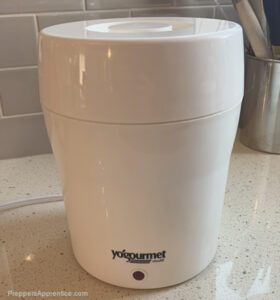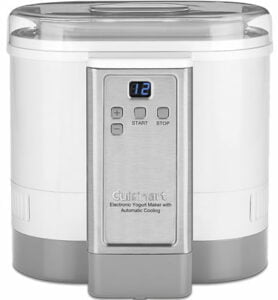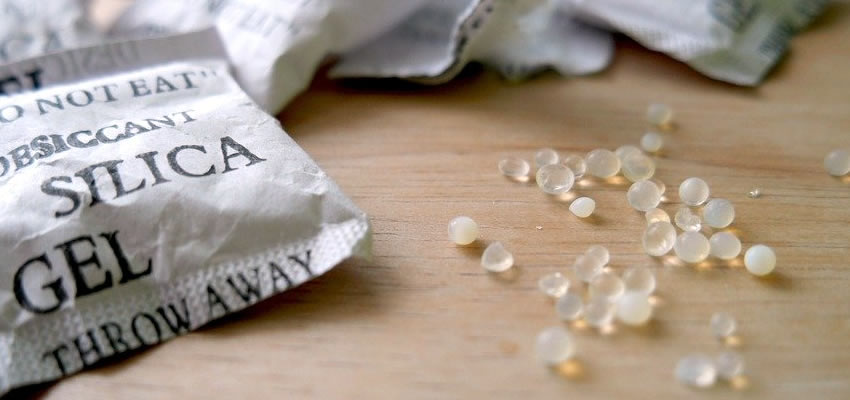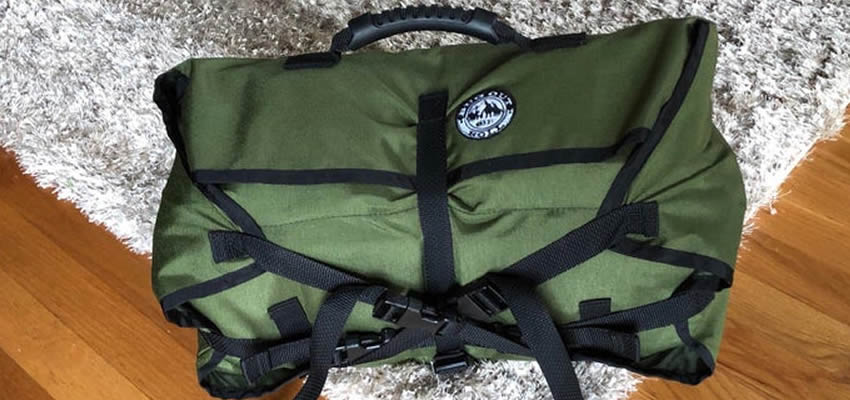Dipping your toes into the world of yogurt making, especially when you have never cultured a dairy product before, is a bit scary.
When I was planning to make my first batch, I distinctly remember how concerned I was that I wouldn’t hit the correct temperatures at the right time. What would happen? Would I spoil the whole batch? Would I inadvertently give my entire family food poisoning?
These are the questions that every beginner who is venturing into this method of food preparation has. Thank Goodness tools like yogurt makers and incubators can take the guesswork out of your yogurt-making and deliver consistent results.
There are very few actual yogurt makers available. The best yogurt makers for beginners are incubators. One might not be universally better than all others, but a starter good yogurt maker will be inexpensive and use only a little electricity. It should consistently keep the correct temperature. A feature that’s nice to have but not necessary might include a timer and auto shut-off.
I know there are a billion other ways to ripen yogurt, from putting hot water in a cooler to using the proof cycle or light in your oven. I’m not here to debate these methods, though I will tell you that heating cooler plastic isn’t a great idea.
My First Yogurt Maker

My very first yogurt maker was a Yogourmet, and I feel that it was an excellent yogurt maker for me as a beginner. I still have it because I found it to be useful for some cheesemaking applications. Though it’s not available anymore, I have seen the odd one on eBay and Amazon.
What’s unique about the Yogurmet yogurt maker is that it uses a small amount of water to keep the heat even and consistent. It turned out to be incredibly reliable. Though it has been many years since I’ve used it as an actual yogurt maker, I wouldn’t complain if I had to rely on it again. It never made a bad batch of yogurt.
Besides being a lovely technique for yogurt incubating, I liked the 2-quart container that came with it. I even invested in a second container, and I still use both for yogurt storage to this day. They are very durable and dishwasher-safe. And I’ve dropped them on the hard kitchen tile floor several times, and they haven’t broken.
I hope Yogourmet puts these back in production because they are simple, hardy, and reliable yogurt makers.
Best No-Power Yogurt Incubator

The Culture Cupboard Yogurt Maker has been in regular use as my bare-bones yogurt maker. I’ve been using it for the last two months, mainly because I’m working on using as little power as possible during the summer.
What I like about it compared to other yogurt makers is that it takes up almost no space. There are no cords to mess with, and they can be used anywhere. I didn’t think it would hold heat for the whole eight hours of incubation time that I like to put my yogurt through. When I tested the temperature at the end of the ripening window, I was happy with how little the temperature had fallen and how firm my yogurt was. I only suggest placing a towel on top of the lid to help minimize heat loss.
I also like its design. Most 1-quart canning jars will work with this thermos-style yogurt maker, which makes it very economical.
Available at Amazon.
Best Low-Power Yogurt Maker for Off-Grid Use

The Euro Cuisine YM100 is an all-around dependable yogurt maker with the added benefit of having the lowest wattage of all the beginner yogurt makers listed today. Since it takes only 13 watts to power, this is an ideal yogurt maker for those on a tight off-grid power budget.
Part of the reason its energy consumption is so tiny is the seven separate yogurt jars. There is more surface area to transfer heat through, so the unit produces less heat overall.
It’s an excellent incubator for the beginner yogurt maker because it incubates the yogurt directly into seven 6-ounce glass jars, or enough for one person for a week. Extra jars are available if you want to make multiple batches over a week. If you have a family of four, you can cook up a batch one day, another batch the second day, and have enough yogurt on hand to last two more days.
Available at Amazon and Lehman’s.
Best All-Around Yogurt Maker for Beginners

The Cuisinart Electric Yogurt Maker is one of my all-time favorite yogurt makers. I’m not sure if it’s in production anymore, but it really should be. It’s one of the very few yogurt makers that actually cools off your homemade yogurt after its incubation cycle is complete. It was a helpful tool back when our lives were hectic because all I had to do was heat the milk, cool it, and inoculate it. The Cuisinart yogurt maker handled the cooking and cooling, and we had fresh yogurt for breakfast every morning.
I gave this yogurt maker to my aunt, as I have other methods. I should have kept it as that cooling feature alone made the Cuisinart yogurt maker one of the best electric yogurt makers on the market. Also, I could have used something other than a stock image.
The only downside I experienced was that the tabs on either side broke off when I dropped the container. Pulling the container out of the yogurt maker was a little challenging but certainly not impossible.
The Cuisinart yogurt maker can make 50oz of yogurt at a time. You can set the number of hours you want it to incubate, and it will automatically cool when the incubation cycle completes. According to the manual, this electric yogurt maker uses approximately 60 watts to run. This is a moderate load for a small appliance. Even so, it isn’t the worst draw if you’re running on a stable off-grid electrical system, but you will want to calculate its usage.
[UPDATE: It’s definitely not in production anymore, but I found quite a few on eBay.]
Best All-In-One Yogurt Maker

I’ve worked my way through all of my yogurt makers but saved the best for last. Believe it or not, my most trusted yogurt maker is my Instant Pot. It’s not just my current yogurt maker but an all-purpose cooking tool. And it’s not just for yogurt. I boil eggs in it. I can whip up the best chicken soup from scratch in less than an hour. I make at least two dinners a week in it. I make perfect rice in it all the time.
Let’s talk about how an Instant Pot would be a perfect yogurt maker for beginners. I might be a big fan, but I want to discuss how I use it and why I like it best.
It can heat the milk to the high temperature required to denature some of the milk proteins. A separate microwave, range, or cooktop is not needed to make yogurt from scratch. Cool beans.
After the milk is heated, cooled, and inoculated, it becomes an ideal incubator. Use it to incubate for however long you like. After the yogurt sets, you can pour it into another container. Or, use the pot with an air-tight accessory lid, and throw it in the fridge.
Instant Pots are more expensive than the other beginner-appropriate yogurt makers I’ve listed, but it is a worthwhile investment.
One downside is that Instant Pots are much, much more power-hungry. The 6-quart Instant Pot Duo is rated at 1000 watts, but I highly doubt that it would draw anywhere near that much while heating to incubate. It’s feasible to draw more electricity when heating the milk to its highest temperature, but that doesn’t take that long. It isn’t suitable for many off-grid situations but still takes less energy than your average stovetop. There are smaller Instant Pots that use less electricity.
I would also like to note that I make a gallon of yogurt at a time, as you can see from the picture. Instant Pots are widely available. You can also see that I have an extra insert and a slow-cooker lid. I like to take the pot and put it directly in the fridge, but that isn’t necessary. You can look at this model at Amazon and look at the bottom of this post for links to the accessories I use.
Yogurt Makers for Beginners – The Last Word
I’ve given you a history of the yogurt makers I’ve used over the years. Learning safe techniques is far more critical than which yogurt maker would work best. There are many ways to incubate yogurt at home without spending any extra money. I prefer the consistency of a yogurt incubator, and I know that any beginner would benefit from one.












